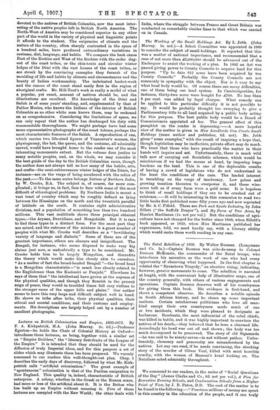The Natal Rebellion of 1906. By Walter Beeman. (Longs:mins and
Co. 5s.)—Captain Beaman was aide-de-camp to Colonel Duncan McKenzie, the commander of the' Natal troops, who introduces his narrative as the work of one who had every opportunity of observing what happened. In the first chapter is related the " Byrnetown Tragedy," an abortive rising, indicating, however, greater movements to come. The rebellion is narrated at length, with the convenient help of illustrative snaps, one of the country generally, with others of various engagements and operations. Captain Boman deserves well of his countrymen for giving them this book. His evidence is first-hand, and shows a competent observer. He describes a notable episode in South African history, and he clears up some important matters. Certain mischievous politicians who love all man- kind except their own countrymen made much of one or two incidents, which they were pleased to designate as barbarous. Bambaata, the most influential of the rebel chiefs, was killed in battle, and it was highly important to convince the natives of his death,—they believed that he bore a charmed life. Accordingly his head was cut off and shown ; the body was too much decomposed to be preserved. The story of old Sigananda —he was said to be ninety-seven—is not without pathos. Unfor- tunately, clemency and generosity are misunderstood by the natives. Let any one read, if he needs convincing, the shocking story of the murder of Oliver Veal, killed with most horrible cruelty, with the women of Messeni's kraal looking on. The Natalians acted admirably throughout. •










































 Previous page
Previous page